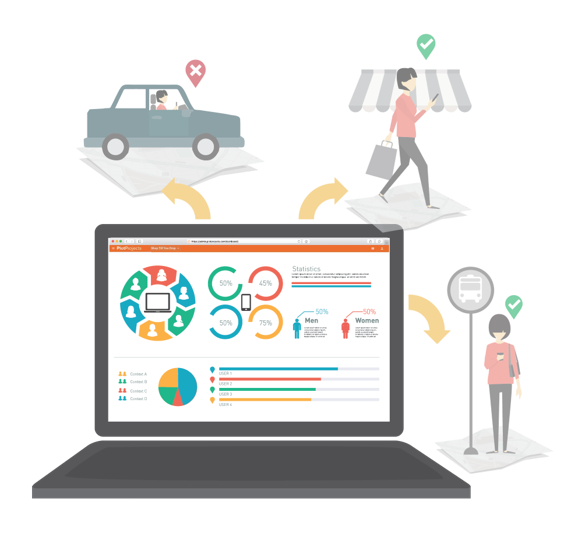To glimpse ‘New Retail’ in all its glory, look no further than China’s east coast megalopolis, Shanghai.
Just take a walk through the luxury department stores on Ninjing Xi Lu – the city’s busiest shopping street. Each step you take leaves a signature for brands to mirror your wants and needs… Where did you come from? In which stores do you stick around? Which sections did you linger in – and which products did you interact with?
Then, take a trip to Shanghai’s Data Exchange, the center of commercial data interconnection and circulation. To see offline data in action is like nothing else: your footprints are here, combined with millions of other data points to enrich your personal profile. By harvesting these, brands can apply valuable attributes about where you go and when, to qualify you as a ‘regular shopper’ a ‘first-time visitor’, a ‘daily commuter’ or a ‘yoga aficionado’.
Just imagine the value of these deeper insights, and the potential to use these in delivering stronger targeting, and better customer experiences across mobile and in-store.

Customers here, there and everywhere
The online-to-offline or ‘O2O revolution’ for China, courtesy of disruptors like Alibaba and Tencent, has meant turning offline actions into online experiences – and vice versa, measuring how digital user behavior has resulted in physical footfall.
But you don’t have to set up shop in Shanghai to collect and apply these kinds of rich consumer insights.
Here are three creative ways that retail brands can use location data to supercharge their mobile app experiences, and add value to their store journeys – a treasure trove of real-world insights that add up to something greater than the sum of their parts:
1. Think outside the box in terms of business models. How can you really harness app user intent to understand and monetize what they want and need? Read more →
2. Create demand for location services by making them core to your brand offering and capturing clear consent. How can you remove friction from your users’ daily lives, and their A-to-B journeys? Read more →
3. Make your app into an extension of real life by seamlessly switching content on-the-fly which mirrors your userś shopping habits, daily routines and product preferences. Where are they, and what do they need? Read more →
